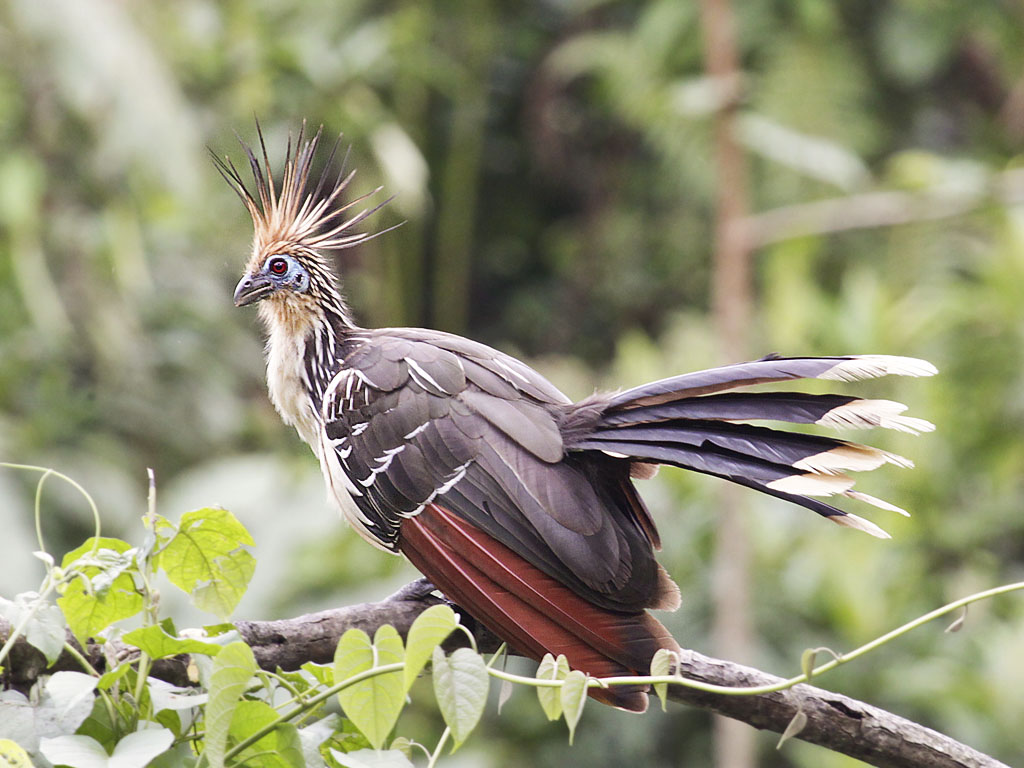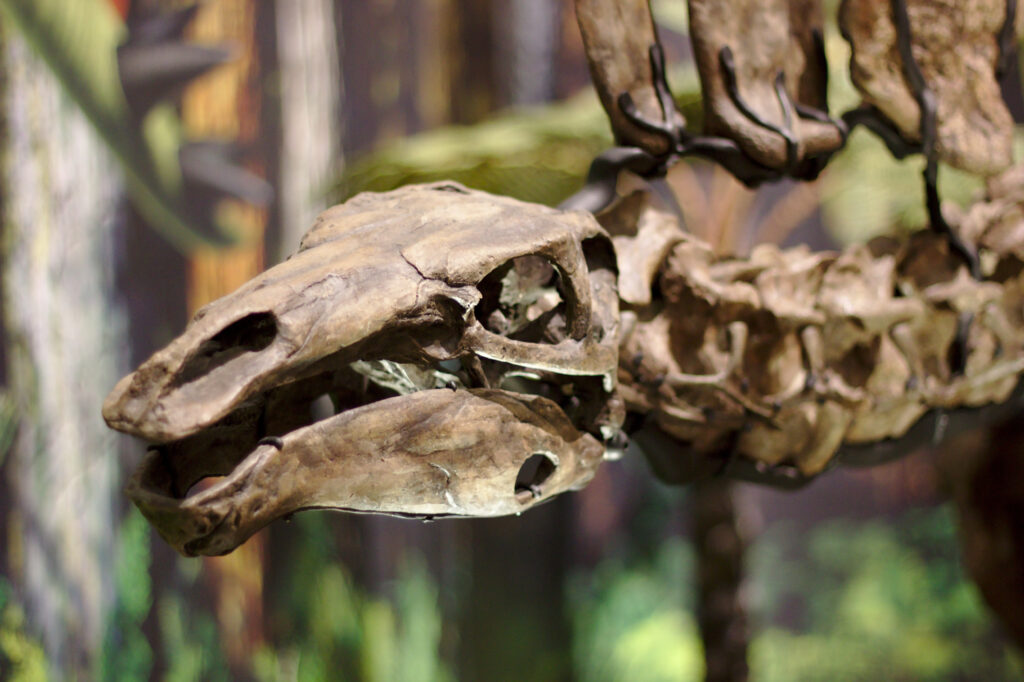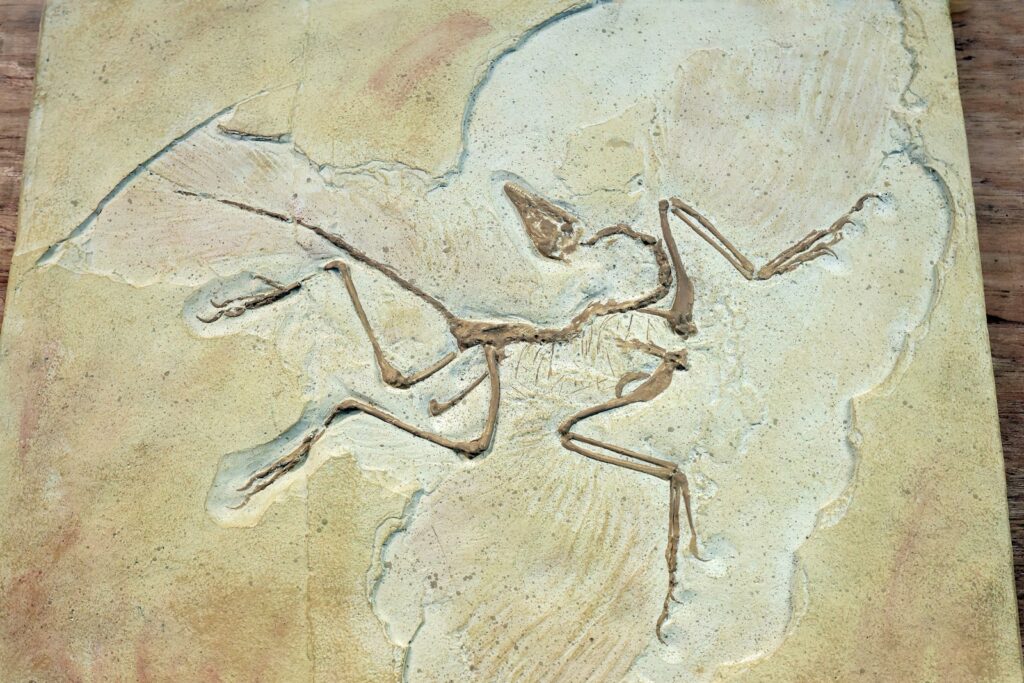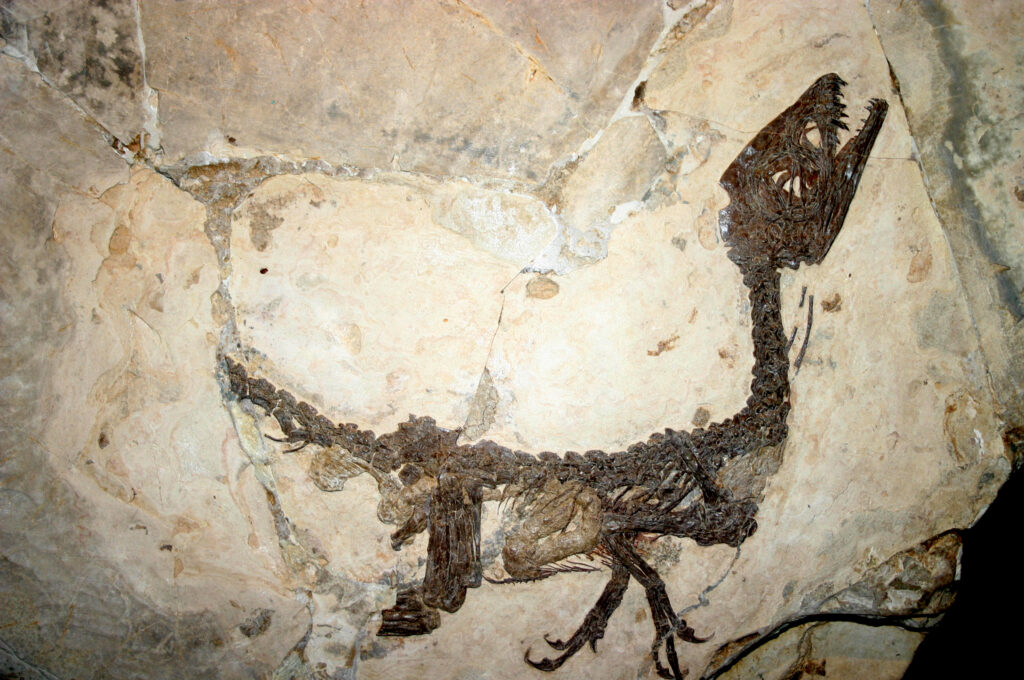Picture this: you’re standing in a museum, staring at a fossil no bigger than your thumb. The placard reads “smallest dinosaur ever discovered,” but something feels off. The delicate bones, the wing-like structures, the tiny beak – it looks suspiciously like a hummingbird. Welcome to one of paleontology’s most mind-bending mysteries, where the line between dinosaurs and birds isn’t just blurred – it’s practically invisible.
The Shocking Discovery That Changed Everything

In 2020, scientists unveiled Oculudentavis khaungraae, a specimen so small it made headlines worldwide as the tiniest dinosaur ever found. But here’s where things get wild – this little creature, preserved in amber from Myanmar, was barely larger than a bee hummingbird. The fossil showed a skull just 14 millimeters long, complete with tiny teeth and enormous eye sockets that dominated its head. What made researchers’ jaws drop wasn’t just its size, but how eerily similar it looked to modern birds.
The discovery sent shockwaves through the scientific community because it challenged everything we thought we knew about the size limits of dinosaurs. Imagine finding a T-Rex fossil the size of a chicken – that’s the level of surprise this tiny specimen created. The creature’s features were so bird-like that many scientists immediately questioned whether they were looking at a dinosaur at all, or something that had already crossed the evolutionary threshold into true bird territory.
This wasn’t just another fossil find – it was a game-changer that forced paleontologists to reconsider the entire dinosaur-to-bird transition. The specimen’s preservation in amber was so perfect that researchers could see details normally lost to time, including soft tissue structures that provided unprecedented insights into early bird evolution. Some experts called it the missing link, while others argued it was evidence that the distinction between small dinosaurs and early birds was more complex than anyone had imagined.
But the plot thickened when follow-up studies revealed inconsistencies in the original interpretation. The scientific community found themselves in heated debates about classification, with some researchers arguing the specimen represented a new type of early bird rather than a dinosaur. This controversy highlighted just how thin the line between these two groups really is, especially when dealing with creatures that lived during the crucial transition period.
When Dinosaurs Started Growing Feathers
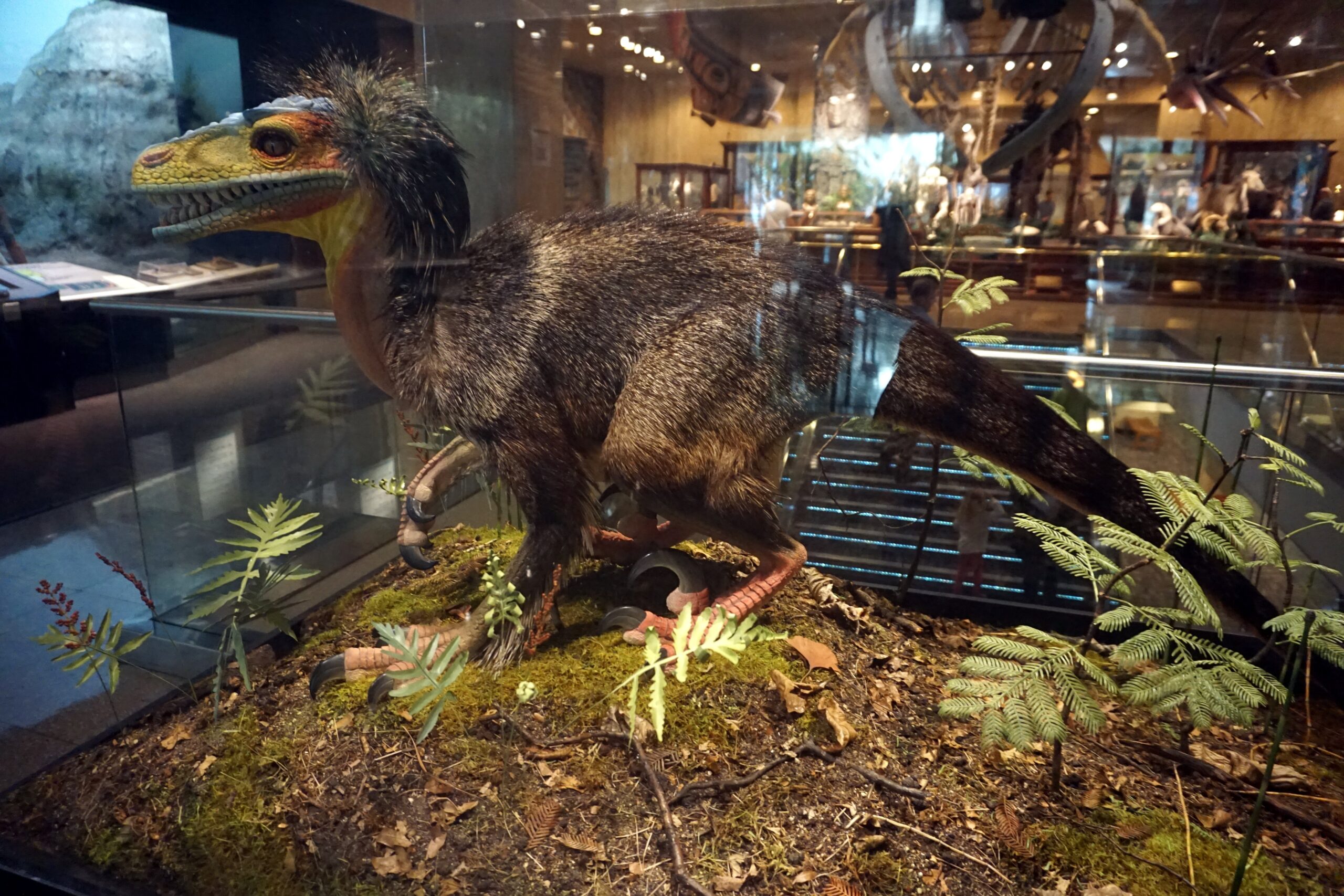
The feather revolution didn’t happen overnight – it was a gradual transformation that began millions of years before the first bird took flight. Early dinosaurs like Sinosauropteryx shocked the world when scientists discovered they had primitive feathers, not for flying, but for insulation and display. These weren’t the flight feathers we see on modern birds, but rather fuzzy, hair-like structures that looked more like down than anything capable of generating lift.
What’s fascinating is that feathers evolved for completely different reasons than flight. Think of it like humans developing opposable thumbs – initially useful for gripping branches, but eventually becoming the foundation for tool use and technology. Dinosaur feathers started as simple temperature regulation, much like how a cat’s fur keeps it warm, but gradually became more complex and specialized over millions of years.
The fossil record shows us an incredible progression from simple filaments to complex, branched structures that eventually became capable of supporting flight. Creatures like Anchiornis had fully formed flight feathers on both their arms and legs, creating a four-winged gliding system that looks almost alien to our modern understanding of bird anatomy. These transitional forms bridge the gap between ground-dwelling dinosaurs and aerial birds in ways that continue to amaze researchers.
By the time we reach the Late Jurassic period, the distinction between feathered dinosaurs and early birds becomes incredibly blurry. Some species could glide, others could make short flights, and many displayed elaborate feather patterns for mating displays that rival the most colorful peacocks today. This gradual transition makes it nearly impossible to draw a clear line between where dinosaurs end and birds begin.
The Size Problem That Puzzles Scientists

Here’s where things get really interesting – the smaller a dinosaur gets, the more it starts to resemble a bird. It’s like nature was experimenting with a sliding scale, where decreasing size automatically triggered bird-like characteristics. The tiniest dinosaurs developed hollow bones, enlarged brains relative to body size, and increasingly sophisticated respiratory systems that mirror modern avian anatomy.
Scientists face a classification nightmare when dealing with these miniature specimens because traditional dinosaur features become less reliable as size decreases. A massive Triceratops is obviously a dinosaur, but when you’re looking at something smaller than a sparrow with feathers, wings, and a beak, the categories start breaking down. It’s like trying to decide whether a wolf pup is still a wolf or if it’s crossed into dog territory – the boundaries become frustratingly unclear.
The metabolic demands of being extremely small also pushed these creatures toward bird-like adaptations. Tiny bodies lose heat rapidly, requiring faster metabolisms and more efficient cardiovascular systems. This biological pressure naturally selected for features we now associate with birds – rapid heartbeats, high-energy lifestyles, and the ability to maintain constant body temperature regardless of environmental conditions.
What’s mind-blowing is that some of these “smallest dinosaurs” show more advanced bird-like features than larger, clearly dinosaurian species that lived at the same time. It’s as if evolution was running multiple experiments simultaneously, with some lineages racing toward bird-hood while others remained stubbornly dinosaurian. This parallel evolution makes untangling the family tree incredibly complex and controversial.
Amber Fossils Reveal Incredible Details
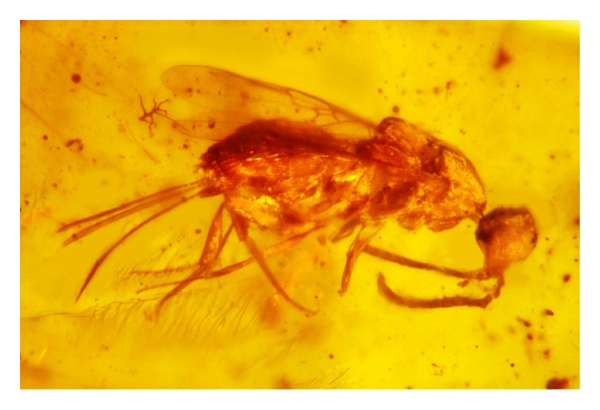
Amber preservation is like nature’s time capsule, capturing moments with such clarity that scientists can see individual feather barbules and even cellular structures. When researchers examine these amber-preserved specimens under powerful microscopes, they’re essentially looking at creatures that died yesterday, not 100 million years ago. The level of detail is so extraordinary that some features visible in amber fossils have never been seen in traditional rock fossils.
The Myanmar amber deposits have become treasure troves for understanding the dinosaur-bird transition because they preserve soft tissues that normally decay within days of death. Imagine finding a photograph from the Cretaceous period – that’s essentially what these amber fossils represent. Scientists can see the actual colors of feathers, the texture of skin, and even the contents of stomachs in some specimens.
These perfectly preserved specimens reveal that early birds and tiny dinosaurs shared far more similarities than anyone expected. The amber shows us creatures with dinosaur skulls but bird-like feet, or specimens with clearly avian wings attached to distinctly reptilian bodies. It’s like looking at nature’s rough drafts, where evolution was still figuring out the final design for what would eventually become modern birds.
The controversy surrounding amber specimens often centers on their incredible preservation quality, which sometimes seems too good to be true. Some scientists worry about potential forgeries or misinterpretations, while others argue that amber provides our clearest window into this crucial evolutionary transition. The debate itself highlights how these fossils challenge our fundamental understanding of prehistoric life.
Ancient Flight: Gliding vs True Flying
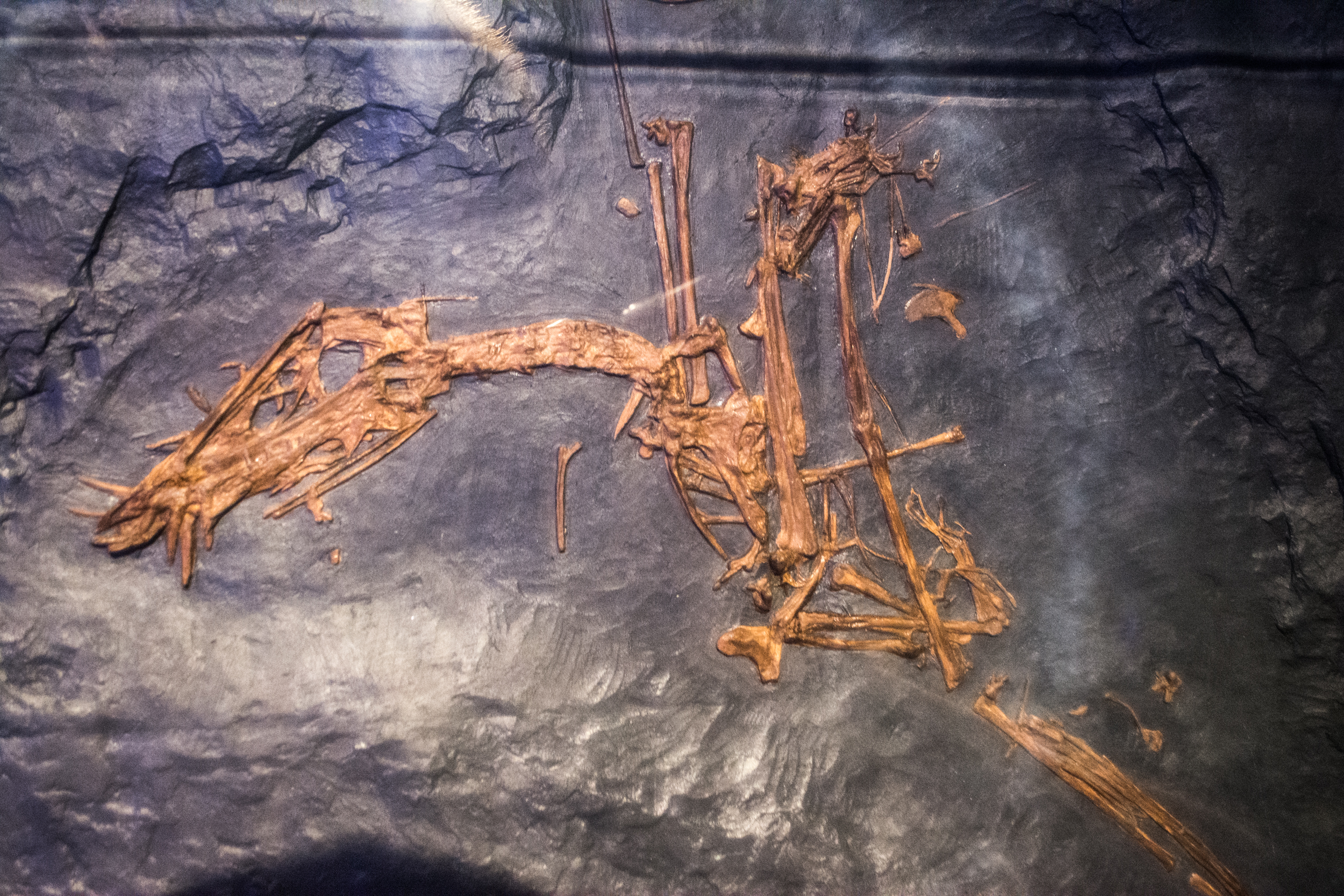
The journey from ground-dwelling dinosaur to soaring bird wasn’t a simple leap – it was more like learning to walk before you run, except with wings. Early attempts at flight were clumsy affairs, with creatures like Microraptor using four wings to glide between trees like prehistoric flying squirrels. These early fliers couldn’t sustain powered flight but could cover impressive distances through controlled gliding.
Think of it like the difference between a paper airplane and a jet engine – both achieve flight, but through completely different mechanisms. Early bird-like dinosaurs relied on gravity and air currents, launching themselves from high perches and riding thermals to extend their gliding distance. This strategy worked well in the dense forests of the Cretaceous period, where tall trees provided perfect launching platforms.
The transition to true powered flight required massive changes in muscle structure, bone density, and respiratory systems. Modern birds have enlarged breast muscles that can account for up to 25% of their body weight, along with hollow bones and air sacs that make their skeletons incredibly light yet strong. These adaptations took millions of years to develop and represent one of evolution’s most impressive engineering achievements.
What’s remarkable is that some of the smallest “dinosaurs” show more advanced flight adaptations than larger, clearly bird-like species from the same time period. This suggests that the evolution of flight wasn’t a single linear progression but rather multiple experiments happening simultaneously across different lineages. Some succeeded in achieving true flight, while others remained talented gliders throughout their evolutionary history.
Teeth vs Beaks: The Feeding Revolution
The shift from teeth to beaks represents one of the most dramatic changes in the dinosaur-to-bird transition, and it happened for surprisingly practical reasons. Teeth are heavy, require constant replacement, and limit the types of foods an animal can process efficiently. Beaks, on the other hand, are lightweight, versatile tools that can be shaped for specific diets – from seed-cracking to nectar-sipping to fish-catching.
Early bird-like dinosaurs showed a fascinating mix of both features, with some species having teeth in the back of their mouths but beak-like structures at the front. Imagine a creature that could both crack nuts with its beak and tear meat with its rear teeth – that’s exactly what some of these transitional forms could do. This combination approach gave them incredible dietary flexibility during a time when food sources were rapidly changing.
The loss of teeth wasn’t just about weight reduction – it was also about processing food more efficiently. Modern birds use their gizzards, muscular stomach chambers filled with small stones, to grind food that would normally require teeth. This system is actually more efficient than chewing because it allows continuous processing while the bird continues other activities like flying or watching for predators.
Some of the tiniest dinosaur specimens show this transition in real-time, with reduced tooth counts and increasingly beak-like jaw structures. Scientists can literally trace the evolutionary pathway from tooth-filled dinosaur mouths to the specialized beaks we see in modern birds. It’s like having a time-lapse video of evolution in action, compressed into the fossil record.
Brain Evolution: Getting Smarter to Fly
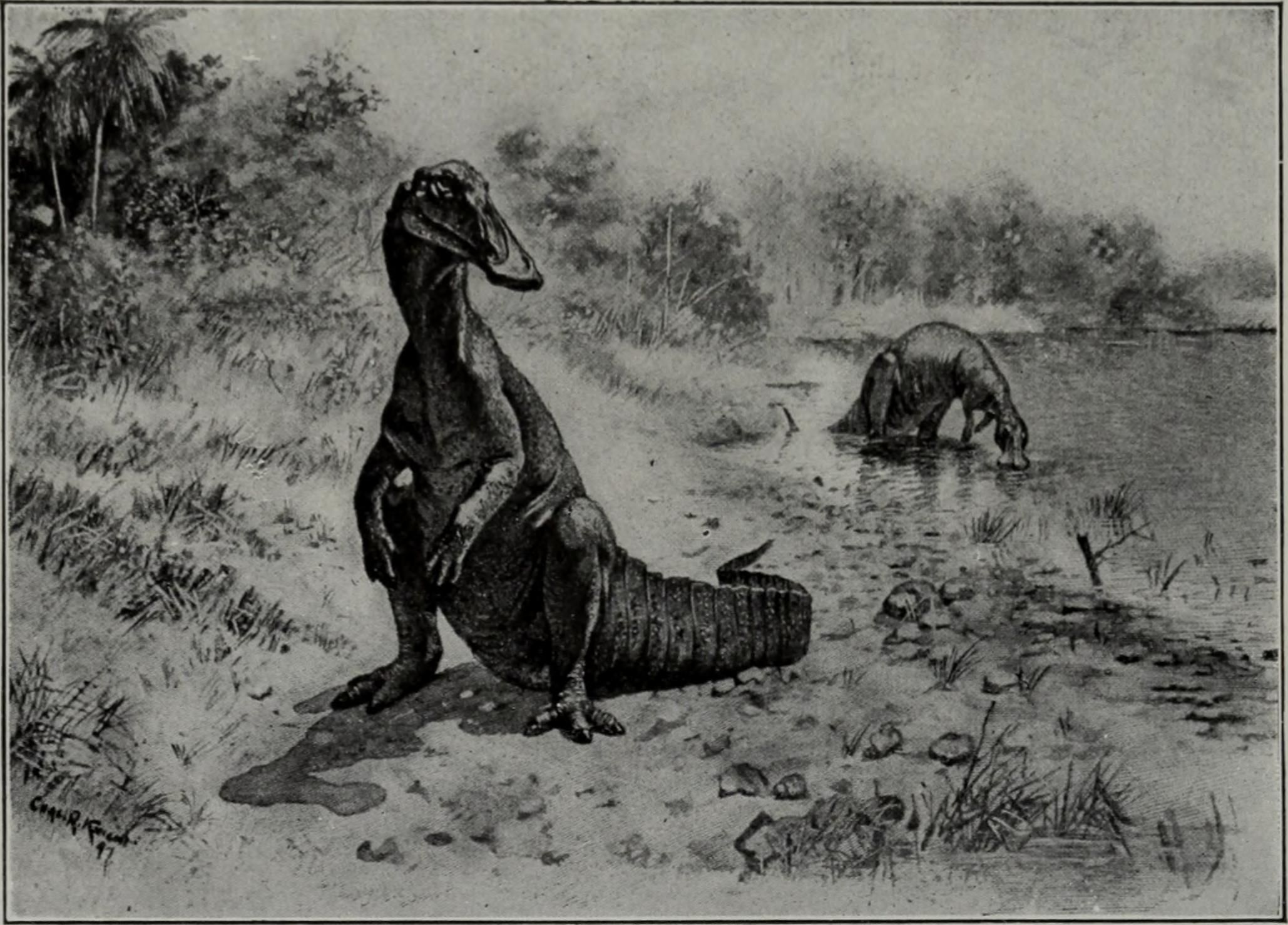
Flying requires serious brainpower – much more than walking or swimming. Modern birds have proportionally larger brains than most reptiles, with enlarged regions dedicated to processing visual information, maintaining balance, and coordinating complex flight maneuvers. The transition from dinosaur to bird wasn’t just about growing wings; it was about developing the neural hardware to use them effectively.
The smallest dinosaur specimens show enlarged brain cases relative to their body size, suggesting they were already developing the enhanced cognitive abilities necessary for aerial life. Think about what a hummingbird’s brain has to process – it needs to hover in precise positions, remember the locations of hundreds of flowers, navigate complex three-dimensional spaces, and coordinate wing movements that can exceed 80 beats per second. That’s serious computational power packed into a brain smaller than a pea.
Fossil evidence shows that brain enlargement began long before true flight evolved, suggesting that intelligence was a prerequisite rather than a consequence of aerial ability. Enhanced vision, spatial awareness, and motor control were necessary for even basic gliding, and these cognitive improvements paved the way for increasingly sophisticated flight behaviors.
What’s fascinating is that some tiny dinosaur species show brain-to-body ratios that rival or exceed those of modern birds. This suggests that the neurological foundation for flight was established millions of years before the physical adaptations were perfected. It’s like evolution installed the software before building the hardware, preparing these creatures for a lifestyle they hadn’t quite achieved yet.
Respiratory Systems: Breathing Like a Bird
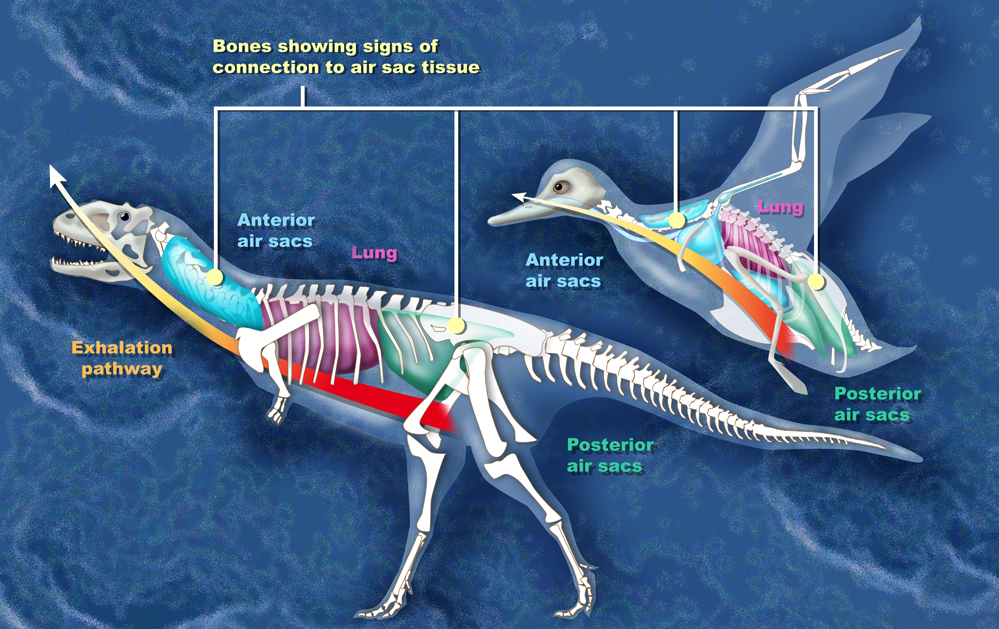
Bird breathing is unlike anything else in the animal kingdom – it’s a one-way system that’s incredibly efficient at extracting oxygen from air. While mammals breathe in and out through the same passages, birds have a complex system of air sacs that allows fresh air to flow continuously through their lungs. This adaptation is crucial for high-altitude flight and sustained high-energy activities.
Evidence from the smallest dinosaur fossils suggests this revolutionary breathing system evolved much earlier than previously thought. Tiny air sacs visible in some specimens indicate these creatures were already developing the respiratory adaptations that would later make powered flight possible. It’s like finding the blueprints for a jet engine in a bicycle factory – the technology was being developed long before it was actually needed.
The transition to avian-style breathing required massive changes in bone structure, with many bones becoming hollow and connected to the respiratory system. This adaptation serves double duty – reducing weight for flight while improving oxygen delivery to muscles. Modern birds can maintain activity levels that would quickly exhaust similarly-sized mammals, thanks to their superior respiratory efficiency.
Some researchers argue that advanced respiratory systems in tiny dinosaurs prove these creatures were already functionally birds, regardless of their other characteristics. The breathing apparatus is so specialized and complex that its presence suggests these animals had already crossed the evolutionary threshold from reptile to bird, even if they retained some dinosaurian features in their skeletons.
Molecular Evidence: DNA’s Ancient Secrets

While we can’t extract DNA from fossils millions of years old, scientists can study the genetic relationships between modern birds and their closest living relatives to understand the dinosaur-bird transition. Genetic analysis reveals that birds are literally living dinosaurs – they’re more closely related to velociraptors than lizards are to snakes. This molecular evidence provides a completely different perspective on the classification debate.
Modern genetic studies show that the bird lineage split from other dinosaur groups much earlier than the fossil record initially suggested. The molecular clock indicates that true birds may have evolved 50 million years earlier than the earliest confirmed bird fossils, suggesting there’s a huge gap in our fossil record where the most crucial transitions occurred.
Comparative genetics also reveals which dinosaur groups were most likely to produce bird-like descendants. The genetic toolkit for feathers, hollow bones, and enhanced metabolism was already present in many dinosaur lineages, just waiting for the right environmental pressures to activate these dormant capabilities. It’s like having all the ingredients for a cake but needing the right recipe to put them together.
The molecular evidence strongly supports the idea that many tiny dinosaur species were already so bird-like genetically that calling them dinosaurs becomes somewhat arbitrary. From a genetic perspective, the transition happened gradually over millions of years, with different lineages exploring various combinations of bird-like and dinosaur-like traits until successful flight evolved.
Environmental Pressures: Why Size Mattered

The Cretaceous period was experiencing dramatic climate changes that favored smaller, more adaptable species over large, specialized dinosaurs. Rising temperatures, changing vegetation patterns, and fluctuating sea levels created environmental pressures that pushed some dinosaur lineages toward smaller body sizes and more flexible lifestyles. Being small meant requiring less food, adapting more quickly to changing conditions, and exploiting ecological niches unavailable to larger species.
Forest environments particularly favored small, agile creatures that could navigate complex three-dimensional spaces. The dense canopies of Cretaceous forests provided perfect habitats for gliding and early flight experiments, while ground-dwelling required more specialized adaptations for survival. Small size also meant faster reproduction cycles, allowing these species to evolve more rapidly in response to environmental changes.
Competition with mammals may have also driven some dinosaur lineages toward smaller sizes and more specialized ecological roles. As mammals diversified and claimed many terrestrial niches, small dinosaurs found success by literally rising above the competition – taking to the trees and eventually the skies. This vertical escape route led directly to the evolution of flight and modern birds.
The extinction event that ended the dinosaur age was particularly harsh on large species, while small, bird-like dinosaurs had better survival chances. Their ability to fly allowed them to escape local disasters, find new food sources, and colonize environments unavailable to ground-bound species. Size wasn’t just an evolutionary choice – it was a survival strategy that ultimately saved the dinosaur lineage.
Modern Birds: Living Dinosaur Evidence
Every time you see a chicken pecking in a yard or a sparrow hopping on a fence, you’re looking at a living dinosaur. Modern birds retain so many dinosaurian characteristics that paleontologists use bird anatomy to understand extinct species. The way a bird moves its head, the structure of its feet, even the way it sits on eggs – all of these behaviors have direct parallels in the fossil record of their dinosaur ancestors.
Some modern birds show surprisingly primitive features that connect them directly to their dinosaurian heritage. Hoatzin chicks have claws on their wings that they use to climb trees, much like their ancient ancestors. Young chickens and other ground birds show behaviors like pack hunting and complex social structures that mirror what we see in dinosaur fossil sites where multiple individuals are found together.
The diversity of modern birds – from tiny hummingbirds to massive ostriches – demonstrates the incredible evolutionary potential that was already present in small Cretaceous dinosaurs. Each major bird group represents a different solution to the challenges of aerial life, showing how the basic dinosaur body plan could be modified for everything from oceanic diving to high-altitude soaring.
Studying modern bird development also reveals how dinosaur-like features persist even in highly specialized species. Bird embryos go through stages where they have teeth, long tails, and other distinctly dinosaurian characteristics before developing their final adult form. It’s like watching evolution in reverse, with each bird briefly recapitulating its ancient evolutionary history.
The Classification Controversy Continues
The scientific community remains divided on where to draw the line between dinosaurs and birds, with some researchers arguing that traditional categories have become meaningless. When a creature has dinosaur teeth but bird wings, or bird feathers but dinosaur hips, which category wins? This isn’t just academic hairsplitting – it reflects genuine uncertainty about how evolution actually works at the boundary between major groups.
Recent discoveries have made the classification problem even more complex, with some species showing mosaics of features that don’t fit neatly into either category. It’s like trying to organize a library where some books are simultaneously fiction and non-fiction – the traditional filing system simply doesn’t work. Some scientists have proposed new classification schemes that better reflect the gradual nature of evolutionary transitions.
The controversy extends beyond just scientific classification to public understanding of prehistoric life. Museum displays struggle with how to present these transitional species, and textbooks grapple with explaining relationships that don’t fit into neat categories. The public wants clear answers about what’s a dinosaur and what’s a bird, but science is revealing that nature doesn’t always respect our human need for tidy categories.
This ongoing debate actually reflects something beautiful about the scientific process – our willingness to revise our understanding when new evidence challenges old assumptions. The fact that we’re still arguing about these classifications means we’re still learning, still discovering, and still pushing the boundaries of what we know about life’s incredible diversity and evolutionary creativity.
Future Discoveries: What’s Next?
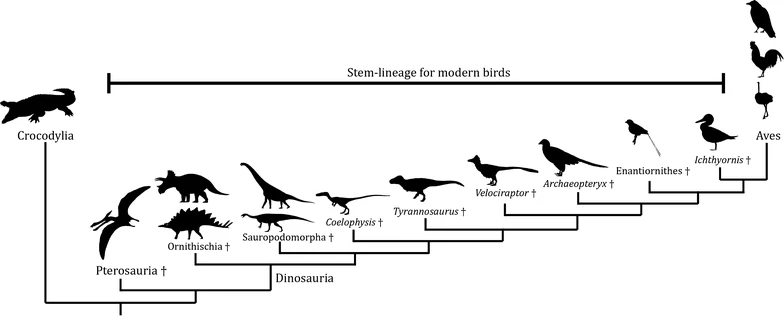
New fossil sites are being discovered regularly, particularly in China and Myanmar, that continue to reveal transitional species bridging the gap between dinosaurs and birds. Advanced imaging techniques allow scientists to see details in fossils that were invisible to previous generations of researchers, revealing soft tissue structures, internal organs, and even cellular details that provide unprecedented insights into ancient life.
Genetic engineering techniques may soon allow scientists to “reverse-engineer” some dinosaur characteristics in modern birds, potentially answering questions about how certain evolutionary transitions occurred. By understanding the genetic switches that control tooth development, tail length, and other features, researchers might be able to trace the molecular pathways that led from dinosaurs to birds.
Artificial intelligence and machine learning are revolutionizing how scientists analyze fossil data, identifying patterns and relationships that human researchers might miss. These computational approaches are particularly valuable for understanding gradual evolutionary transitions, where changes occur across thousands of specimens over millions of years.
The search for even smaller dinosaur species continues, with some researchers predicting that future discoveries might reveal dinosaurs no larger than insects. If such creatures existed, they would completely redefine our understanding of dinosaur diversity and further blur the line between ancient reptiles and modern birds. The story of dinosaur-bird evolution is far from over – in fact, we might be just getting started.
Every new fossil discovery brings us closer to understanding one of evolution’s most remarkable transformations – the journey from ground-dwelling predators to aerial acrobats. Whether we call the smallest specimens dinosaurs or birds might matter less than appreciating the incredible creativity of evolutionary processes that produced such amazing creatures. The next time you watch a bird in flight, remember that you’re witnessing the continuation of a story that began over 150 million years ago with tiny, feathered dinosaurs taking their first tentative glides between ancient trees. What other evolutionary mysteries are still waiting to be uncovered in the rocks beneath our feet?

